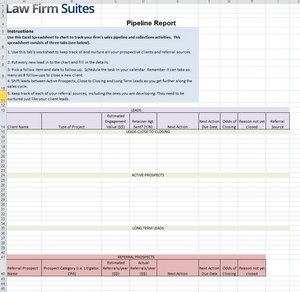A 4-Step System for NYC shared office space attorneys to consistently convert more leads into clients, even when they are jammed up on trial or juggling deals.
In a previous edition of Marketing Mondays, we discussed the 8 Contacts Rules of Sales, and how it can take as many as eight points of contact to convert a prospect into a paying client.
In that article, we suggested that attorneys tend to be inconsistent with prospect follow up. In particular, for solo attorneys and small firm lawyers, who are always one trial or deal from being completely overwhelmed, client follow-up happens inconsistently.
The result is perpetually inconsistent revenues. You finish a trial or close a deal only to end up with a dry pipeline of new business.
To make sure that leads continue to get nurtured into clients (even when you’re most busy) we recommended implementing a system to execute the 8 points of contact.
Setting up a system does not have to be difficult or time consuming. You can do it 4 easy steps:
 1. Manage your list of prospective clients.
1. Manage your list of prospective clients.
Create a way to easily keep track of the contact information of the prospective clients and each of the points of contact that you have with them. There is sophisticated software you can purchase, like Salesforce, ACT! or Microsoft CRM, but you can easily accomplish the same results using your current contact manager (in Outlook or Gmail) and a spreadsheet.
The only thing you need to do with your contacts is to set up a category in Outlook or set up a group in Gmail to keep track of your prospective clients. You can download the Excel spreadsheet our firm uses to keep track of leads here.
2. Create templates for all eight touches.
If you know what point of contact to use in advance, it takes very little time to execute. It can even be set up to get done automatically. The touches should be a combination of emails, calls and, yes, snail-mail.
Create templates for all the emails, so you can load up the emails in seconds, customize where necessary, and send. Others can just be sent automatically by putting the contact on a list; for example, your firm newsletter list or an invite to connect on Linked In.
Have a goal for all the phone calls and script (or outline) them. For example, your goal may be to get an update on the status of their matter. The call may be to invite the person to attend a networking event that you attend regularly.
Finally, have pieces ready to send by snail-mail. These days, the only thing that people get by mail are catalogs and bills. Have something educational about each area of your practice (that solves one of the client’s problems) ready to send. If you send it together with a nice handwritten note, you will get noticed, which is ultimately the goal of making contacts.
Apart from status update phone calls or emails, the touches should not be sales material for your firm (brochures and such), but instead, focus on sending information that is educational or valuable to the client.
In his book Ultimate Sales Machine, sales expert Chet Holmes, offers some really great examples of how to do this.
3. Schedule all the points of contact.
Create a master schedule for when each point of contact should be sent. The timing will be based on the number of days after the prospective client’s initial point of contact with your firm.
In terms of frequency, you will want to space each contact close enough so the prospect doesn’t forget you, but far enough apart so you are not annoying. Typically, the contacts are made more frequent initially (two or three in the first week), then taper off to monthly after the first few weeks.
You will want to be in touch over the entire length of your typical sales cycle – and this will be different for every law practice. For example, a personal injury attorney’s sales cycle may be one month from the date of an injury. For a trusts and estates attorney selling estate planning, the sales cycle may be several years.
Keep in mind, the sales cycle may be different for the different kinds of matters your firm handles. Take the T&E lawyer, for example. The sales cycle may be three years for estate planning, but one month to handle an estate when someone dies. Your firm may require different workflows for the different matters it handles.
4. Delegate where you can.
The beauty of setting up a system is that, once it’s created, you can have someone else, whose time is much less expensive than your own, execute it. If you are lucky enough to have admin staff, assign anything that does not require your direct involvement to them. If you do not, consider hiring a student law clerk or a virtual assistant.
We teach the attorneys in Law Firm Suites’ NYC shared office space to hire awesome student law clerks. We put it in a free whitepaper that you can download here >>
Delegating pieces of the system will ensure that your points of contact out continue to be sent even if you get wrapped in a trial or on a deal. Very quickly, the increase new business will be more than enough to justify the extra expense.
By leveraging a system, most of the points of contact can be completed automatically, and the active ones that require your direct involvement (phone calls, consults and custom emails) can be cued up by a law clerk or assistant and executed by you quickly.
In the end, the system will make sure that all the marketing efforts you put into generating leads is not wasted.
About Marketing Mondays
Marketing Mondays is a weekly blog series aimed at helping solo and small firm attorneys attract and retain new clients. It will focus on real-world marketing strategies that have been executed successfully by small firm attorneys, particularly those with offices in Manhattan law office sublet space, including Law Firm Suites.
Free eBook:
Law Firm Pipeline Chart
photo credit: VinothChandar via photopin cc photo credit: arellis49 via photopin cc



